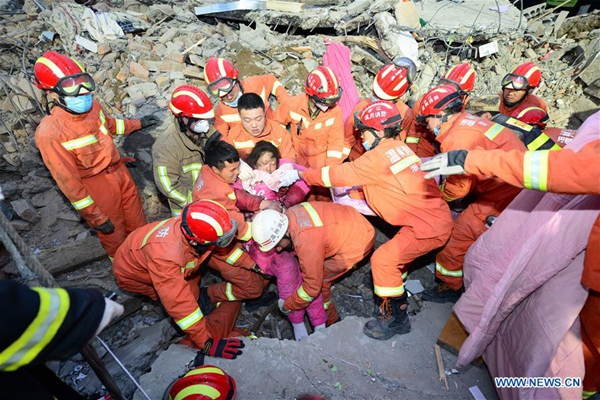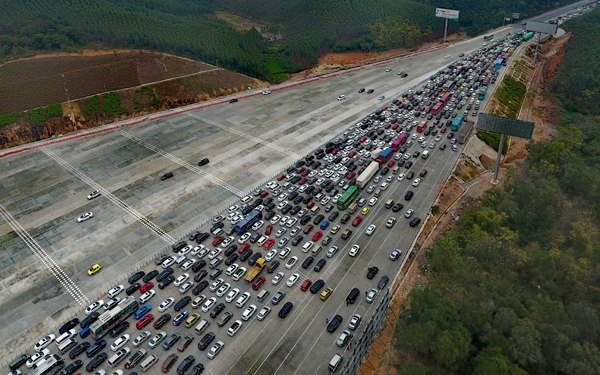2 rescued, 7 dead in China home collapse
| Rescuers pull out a survivor at the accident site in Wencheng County, Wenzhou of east China’s Zhejiang Province, Feb. 3, 2017. Two survivors were rescued and seven found dead after a residential building collapsed in Wenzhou, east China’s Zhejiang Province, local authorities said Friday. (Xinhua) |
Two survivors were rescued and seven found dead after a residential building collapsed in Wenzhou, east China’s Zhejiang Province, local authorities said Friday.
Part of a five-story residential building in Dahui village of Wencheng County collapsed at about 8 a.m. Thursday, burying nine people from two families.
A 63-year-old woman was pulled out from the debris at about 10:40 p.m. Thursday and another female survivor was rescued at about 7 a.m. Friday. Both have been rushed to hospital for medical treatment. The ninth victim buried was found dead at around 10:00 a.m. Friday.
With the help of eight cranes and excavators, more than 400 paramilitary officers, fire fighters, township officials and medical workers have carried out rescue operation.
“The scene is quite chaotic, as if the place was leveled by an earthquake,” a rescuer told Xinhua. “We have to work very carefully because the wreckage of the ruined building are joined to homes still standing.”
One of the adjacent homes, he said, was already damaged with a big hole in its outer wall.
A total of 58 people living nearby were evacuated to safe places.
Local authorities have launched an investigation into the cause of the building collapse.

